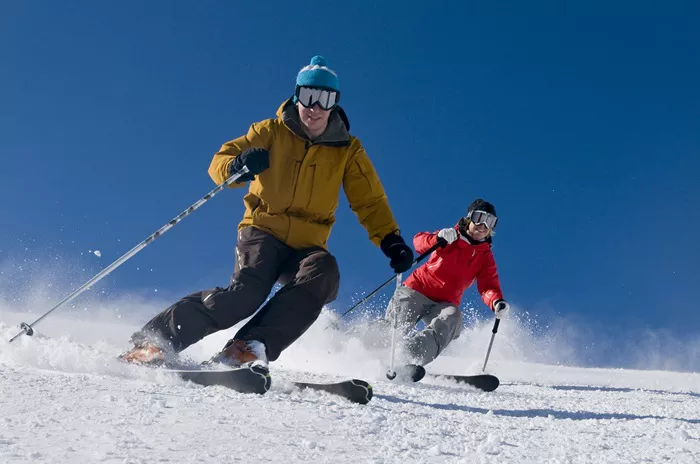Skiing in New Zealand is a thrilling experience that attracts enthusiasts from around the globe. The country boasts stunning landscapes, diverse terrains, and a variety of ski resorts that cater to all skill levels. However, to make the most of your ski trip, it’s essential to know when the best time to hit the slopes is. This article will explore the skiing season in New Zealand, highlighting the best months for skiing, weather conditions, and tips for maximizing your experience on the mountain.
Overview of New Zealand’s Skiing Season
New Zealand’s skiing season typically runs from June to October, with the peak months being July and August. The southern hemisphere’s winter brings cold temperatures and ample snowfall, creating ideal conditions for skiing and snowboarding. Each month offers unique experiences, making it crucial for skiers to choose their timing wisely.
Monthly Breakdown
June:
Opening of Ski Resorts: Most ski resorts begin to open in mid-June.
Snow Conditions: Early season snow can be variable; however, resorts often have good coverage due to artificial snowmaking.
Crowds: June tends to be less crowded than peak months, making it a great time for those looking to avoid long lift lines.
July:
Peak Season: This month sees the highest number of visitors due to school holidays in New Zealand and Australia.
Snow Quality: July typically offers the best snow conditions, with consistent snowfall and well-groomed runs.
Events: Many ski resorts host events and competitions during this time, adding to the festive atmosphere.
August:
Continued Good Conditions: Snow remains excellent, with plenty of powder days.
Crowds: While still busy, August can be slightly less crowded than July as school holidays conclude.
Activities: In addition to skiing, many resorts offer snowshoeing and other winter activities.
September:
Spring Skiing: As temperatures begin to rise, spring skiing becomes popular.
Snow Conditions: The snow may start to soften in warmer weather, making for enjoyable skiing during the day.
Less Crowded: September is generally quieter than July and August, appealing to those who prefer fewer crowds.
October:
End of Season: Most ski resorts close by mid-October.
Last Chance for Skiing: Early October can still provide good conditions for late-season skiing.
Transition to Summer Activities: As the season ends, resorts start preparing for summer activities like mountain biking.
Factors Influencing Ski Conditions
Several factors influence the quality of skiing conditions in New Zealand:
Weather Patterns
Temperature Fluctuations: New Zealand’s weather can be unpredictable. Cold fronts can bring fresh snow, while warmer days might lead to slushy conditions.
Rain vs. Snow: Coastal regions may experience rain during warmer spells; however, higher altitudes usually receive snow even during milder weather.
Geographic Variability
North Island vs. South Island: The South Island is home to most of New Zealand’s ski areas, such as Queenstown and Wanaka. The North Island has Mt. Ruapehu but generally offers fewer options.
Altitude Effects: Higher resorts tend to have better snow retention into late spring compared to lower-altitude areas.
Choosing The Right Resort
New Zealand offers a range of ski resorts catering to different preferences:
Major Ski Resorts
Queenstown (Coronet Peak & The Remarkables):
Known for its stunning scenery and vibrant après-ski scene.
Offers a mix of terrain suitable for all levels.
Wanaka (Cardrona & Treble Cone):
Cardrona is family-friendly with excellent facilities.
Treble Cone boasts some of the best off-piste terrain in New Zealand.
Mt. Ruapehu (Whakapapa & Turoa):
Located on the North Island, it’s popular due to its proximity to major cities like Auckland and Wellington.
Offers diverse terrain but can be busier during school holidays.
Resort Amenities
When choosing a resort, consider amenities such as:
Accommodation options ranging from luxury lodges to budget hostels.
Dining facilities offering local cuisine and international dishes.
Equipment rentals and ski schools for beginners or those looking to improve their skills.
Tips for An Optimal Ski Experience
To enhance your skiing experience in New Zealand:
Book Early: Secure accommodations and lift passes in advance, especially during peak season.
Check Snow Reports: Monitor weather forecasts and snow reports regularly for real-time updates on conditions.
Dress Appropriately: Layering is key due to fluctuating temperatures; ensure you have waterproof gear for wet days.
Explore Beyond Skiing: Take advantage of other winter activities such as snowboarding, sledding, or relaxing at hot pools after a day on the slopes.
Conclusion
The best time to ski in New Zealand largely depends on personal preferences regarding crowd sizes and snow conditions. For optimal experiences with excellent snow quality, July and August are ideal months. However, June offers a quieter start to the season while September provides pleasant spring skiing opportunities as crowds diminish.
Whether you’re a seasoned skier or a beginner looking for adventure, New Zealand’s breathtaking landscapes and vibrant ski culture promise an unforgettable experience on the slopes. Plan your trip accordingly, keep an eye on weather patterns, and prepare for an exhilarating winter getaway in this beautiful country.
Related topics:
- How Is Friction Involved in Sledding And Skiing
- Which Utah Ski Resorts Have Night Skiing?
- Why Are There Grooves in Cross Country Skiing

